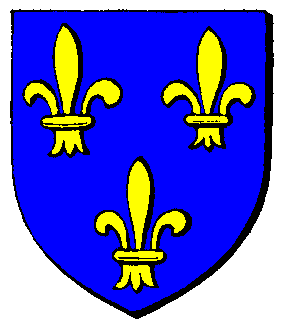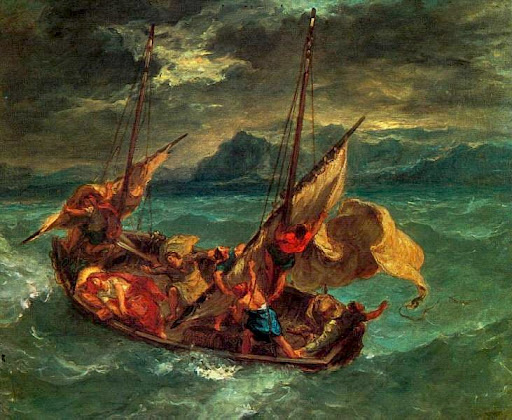

Tricolour, Anthem, Fleur de Lys
French Public Holidays
1st
January New Year’s Day (Jour de l’An)
23rd March
2008 Easter (Pâques)
24th March
2008 Easter Monday (Le lundi de Pâques)
1st May
Labour Day (Fête du Travail)
1st May
2008 Ascension Day (Ascension)
8th May
Victory Day 1945 (Fête de la Victoire)
11th May
2008 Pentecost (Pentecôte)
14th July
Bastille Day (Fête Nationale)
15th August
Assumption Day (Assomption)
1st November
All Saints Day (Toussaint)
11th November
Armistice Day 1918 (Armistice)
25th December
Christmas Day (Nöel)
Introduction-Comment
If a public
holiday falls on a Thursday or a Tuesday, it is quite common for banks and some
shops (or even schools) to faire le pont (i.e. make a long weekend of
it, literally make a bridge). So, if a public holiday is due, you have to make
sure that you have enough money to last you for a few days, as the banks may be
closed for some time!
Before
talking about the main national holiday, I’d like to tell you a bit about the
area of France where I live, Languedoc.
Its name derives from the ‘alternative French’ spoken in southern France,
which was originally distinguished from the ‘northern French’ by the word used
for “yes”. Parisian or northern French for ‘yes’ was ‘oil’ which has developed
into ‘oui’. In the south they used ‘oc’. So, in the north they used the langue
d’oil and in the south Provençal, Catalan and other regional patois all
came under the langue d’oc.
Languedoc
does not have exact boundaries, but today it is thought to be the central part,
west of the Rhône and east of Toulouse, between the southern slopes of the
Massif Central and the sea. It also includes the Roussillon or the Pyrenees-Orientales.
The departments in the Languedoc Roussillon are Gard, Lozère, Hérault and Aude
(where I live). It is the hottest and driest part of France (that’s why I’m
here!).
The
Languedoc region is known for its red wine, Blanquette, flat sunny coastline of
modern resorts and the campsites, wooded mountains and valleys, limestone
plateaux and deep gorges, underground caverns and grottos, and little remote
hilltop villages, its tragic past of rebellion and persecution, its rugby
football and bull-fighting (oh dear on that one!).

I live in a
little hilltop village called Plaigne. Our house is a traditional stonebuilt
farmhouse of this region, about 300 years old. Its name, “La Borde” tells a
French person what the house is like. It is long. Traditionally, bordes have a
chimney at the right hand end of the house. This is where the kitchen and
living area was. Then, on the ground level or below, were the stables and above
those was the hayloft. The children usually slept in the hayloft. Very often at
the left hand end of the house was an attached, open fronted barn. The
stone walls are extremely thick.
|

|
The bordes were designed to keep the building
cool in summer and warm in winter. They have shutters to keep out the cold wind
in winter, and the very hot sun, in summer. In the pictures, you can see that
nowadays the stables and hayloft are living areas and we converted the barn
into a little holiday house.
Now, on to
Bastille Day, July 14th
Bastille Day is one of the
most festive liberation days in the world.
Claude Monet
© Marianne
| Liberty Leading the People
© Delacroix
|
It is celebrated on 14th
July which is the date that marks the storming and destruction of the Bastille,
which was the royal prison. That was back in 1789, during the French
Revolution. I often wonder why they bothered, quite frankly, but to all
Frenchmen this event symbolizes the downfall of the monarchy and the beginning
of liberty for the people. (Still is the ‘beginning’ of liberty in my mind.
They don’t seem to have advanced that far on the liberty front. But I’m a
stranger here, a foreigner and I do love my spot in France, so I will shut up
about that, do what one does when in Rome, and enjoy my tranquil patch in
Mother Earth’s Garden, with its wonderful views).
Bastille Day celebrations
begin on the night before the holiday and last for about 24 hours. In towns and
cities bands play patriotic music and the Tricolour waves outside many
buildings (even in the little villages). There is music everywhere, in the
evening and on into the night, with many grand firework displays. We usually
watch the fireworks at Carcassonne or Castelnaudary.
You may recognize Carcassonne,
if you saw the film, “Robin Hood Prince of Thieves” with Kevin Costner.
Raymonde & Isabelle (my two youngest), love Carcassonne and they love
watching this film. They call the film Carcassonne. “Can we watch Carcassonne,
Mummy?”
Mummy normally agrees to that
request (who can refuse a dose of KC? LOL. Unfortunately, he’s never been at Carcassonne
when I’ve been there! Have seen the costume that he wore though, in a tapestry
shop and atelier). But I digress!
| In our village, on 14th
July, we have a lunchtime village picnic. There is great ambiance and we all
share in a good time together. The maire usually provides some Blanquette,
which is very nice. Yes, very nice. I prefer blanquette to champagne. Far
tastier. | 
|
Other than Bastille Day, there
are many other local festivals in summer. Don’t panic! I’m not going to tell
you about them all now. (For a start, I don’t know them all!). I will say that
each village in the south has its local fête which goes on during one or two
weekends, with village meals, mass, maire’s aperitif, balls (the dancing
variety)……..
In June there is a national music celebration where many of
France’s singers and chorales sing to their hearts’ content (me included).
There are many jazz festivals in towns and villages.
| Lastly, I’ll mention the
Autumn apple festival in Mirepoix, which is 12 km away from us. Mirepoix is
actually in Ariège and therefore not in Languedoc, but it is so close to us,
that I thought I’d include it. Mirepoix is filled with statues and structures
all made out of apples. It makes a splendid site. Each year, a different theme
is chosen. |  |
Cider is served, hot or cold, and there
is a huge omelette that you can participate in the eating of.Apple windmill. On that note, leaving you
feeling hungry and thirsty, I will leave you. I hope you enjoyed this little
slice of France and the French culture.
Angel Cuddles
Sarah Pritchard
Updated
Master Arts -Video Clip



Delacroix Versailles Voltaire
LONG LIVE FRANCE
July 14th 1789 -14 July 2008
France is the first European country which addressed Human Rights
in its Declaration of 1789 during the French Revolution.Many of the current European laws about human
rights were heavily influenced by the French version.
One big
difference though, in 1789 it were only the hommes who received these
rights despite women playing important roles during the Revolution.

Click above - Viva La France Dance